
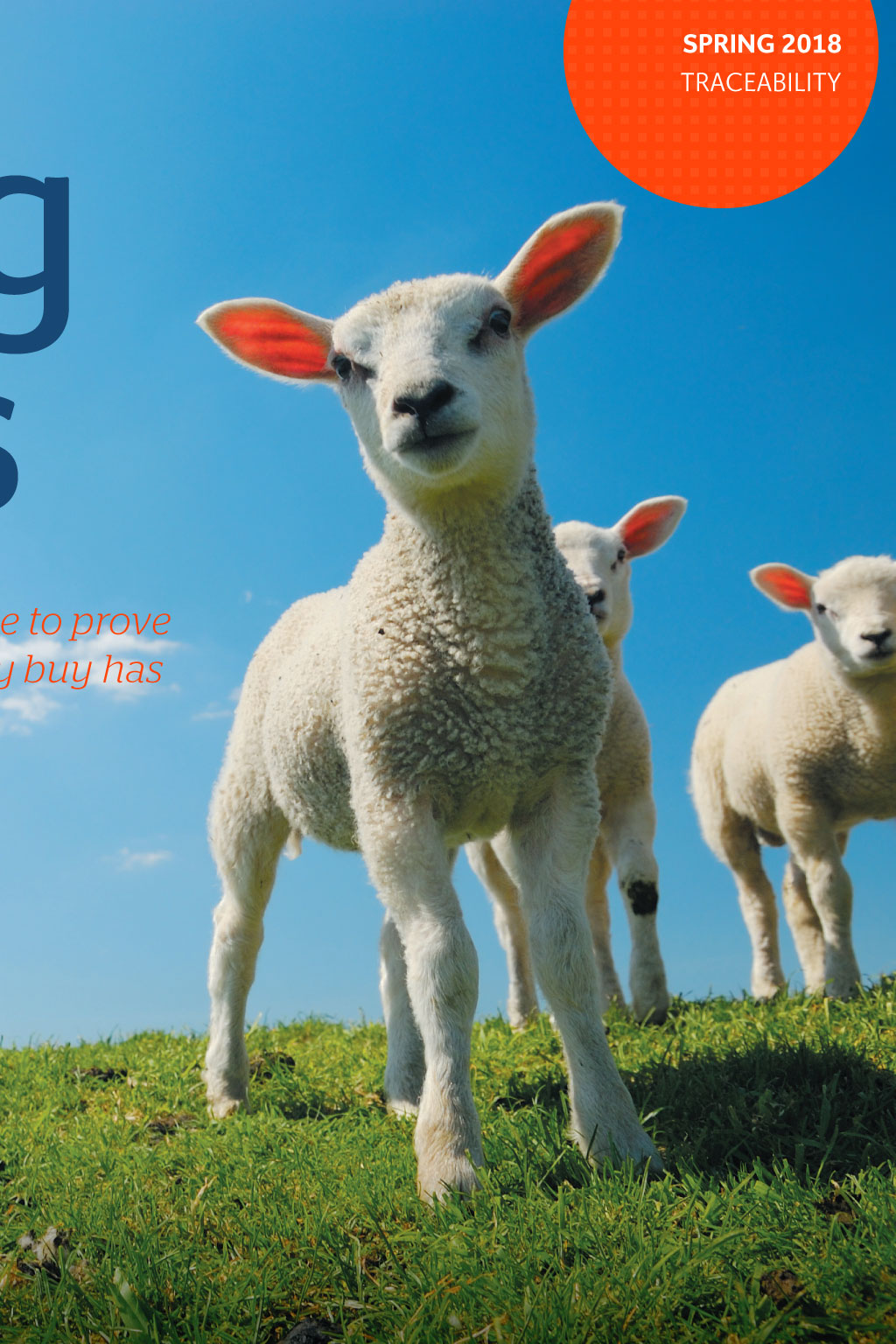
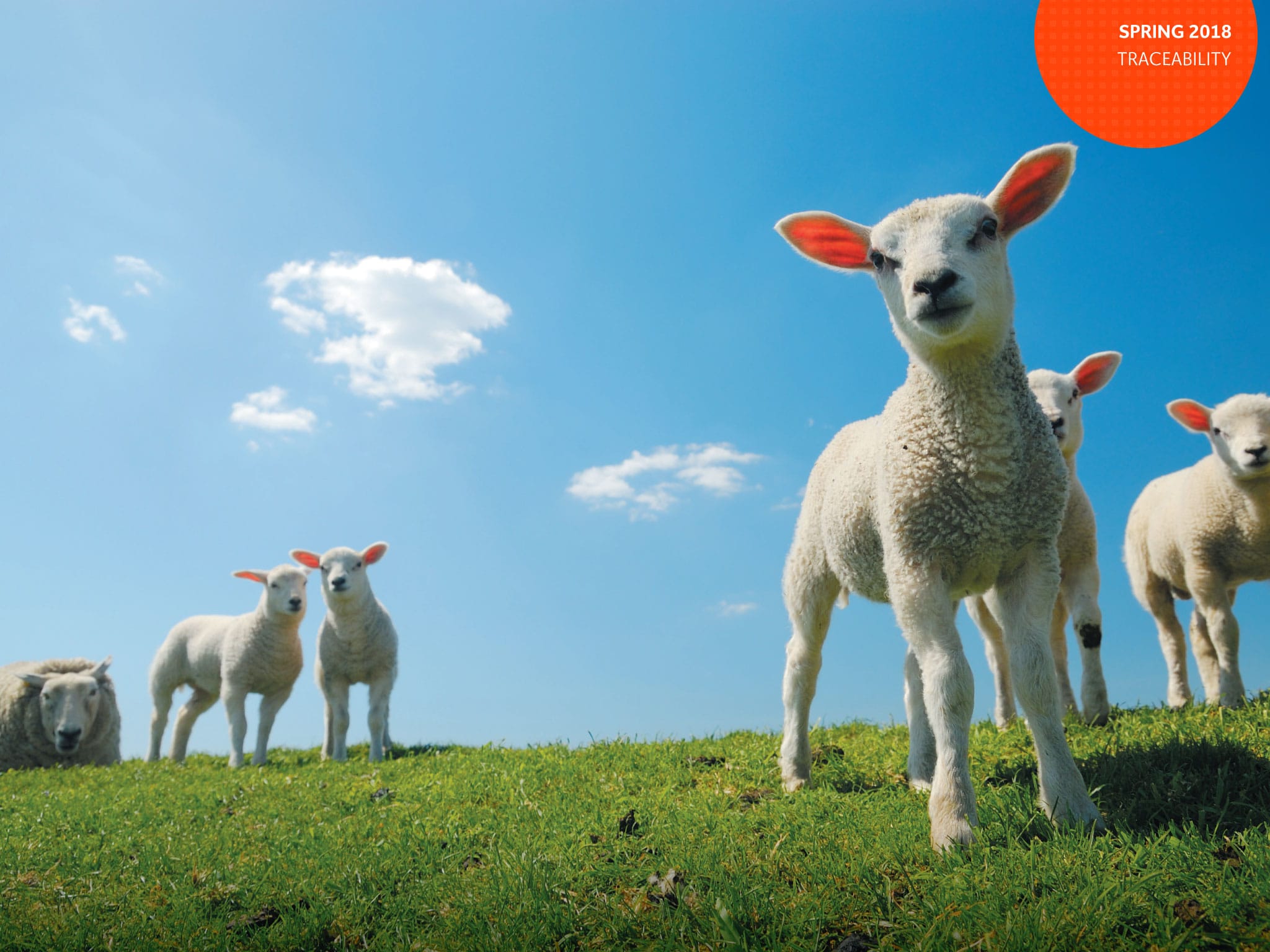

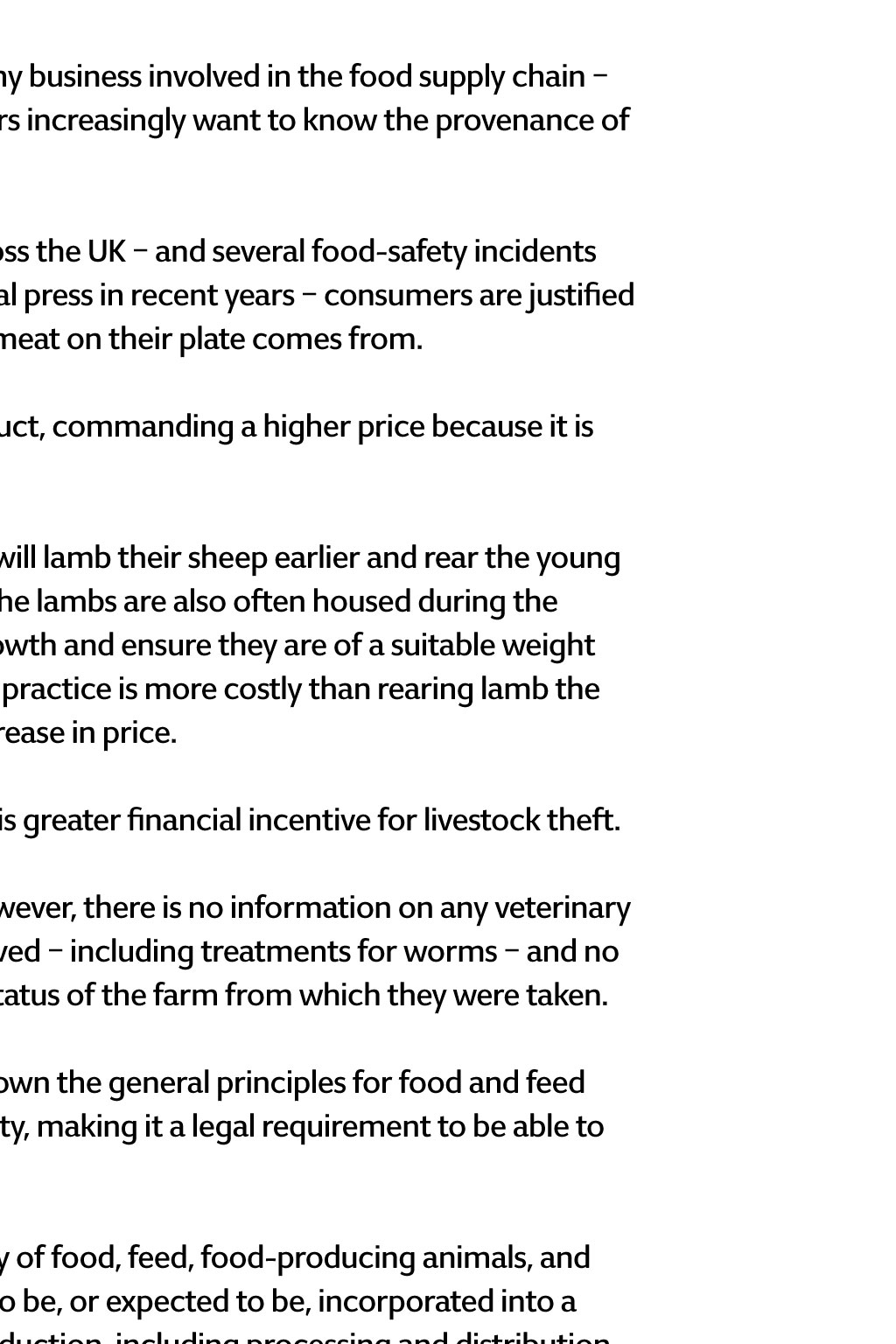
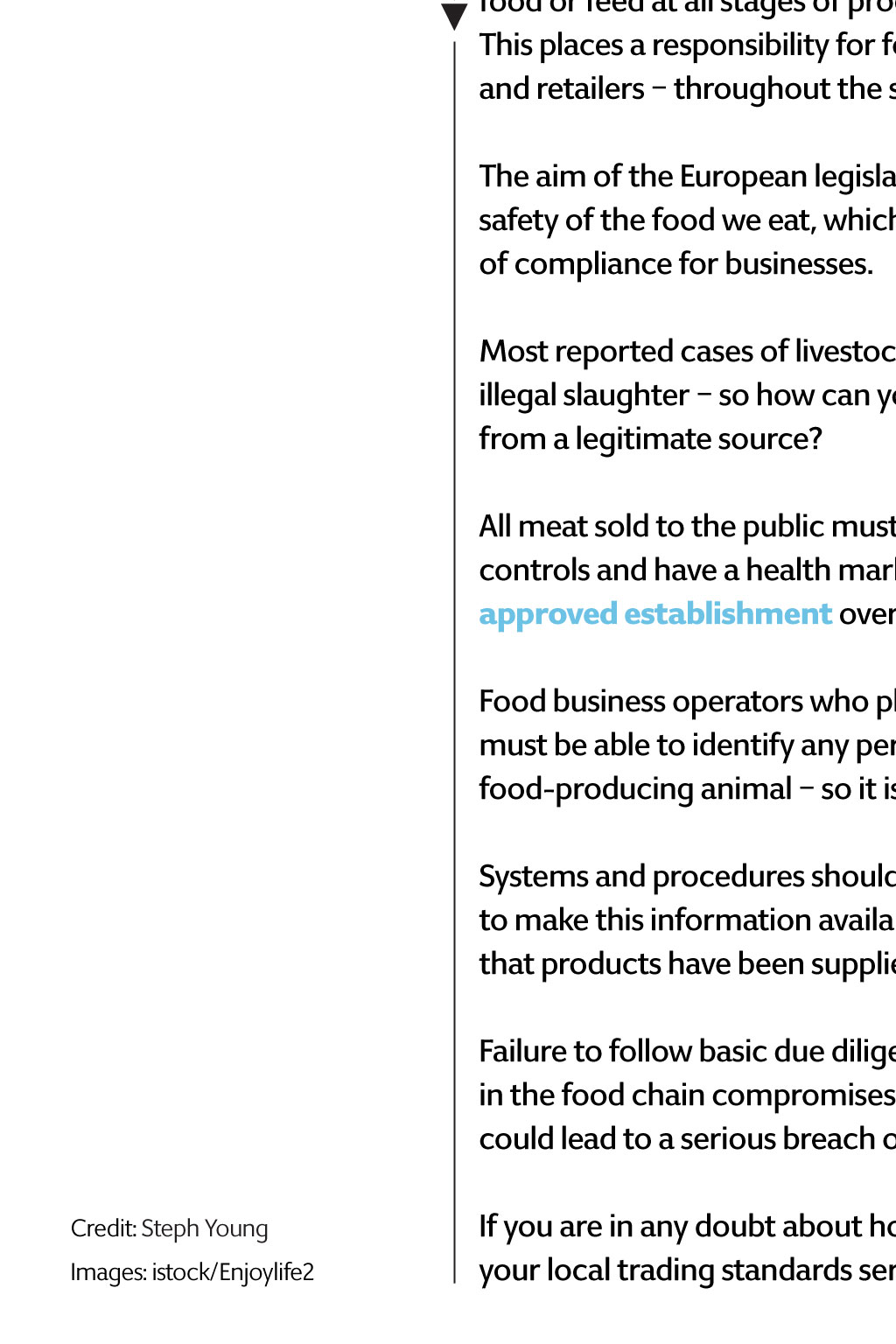
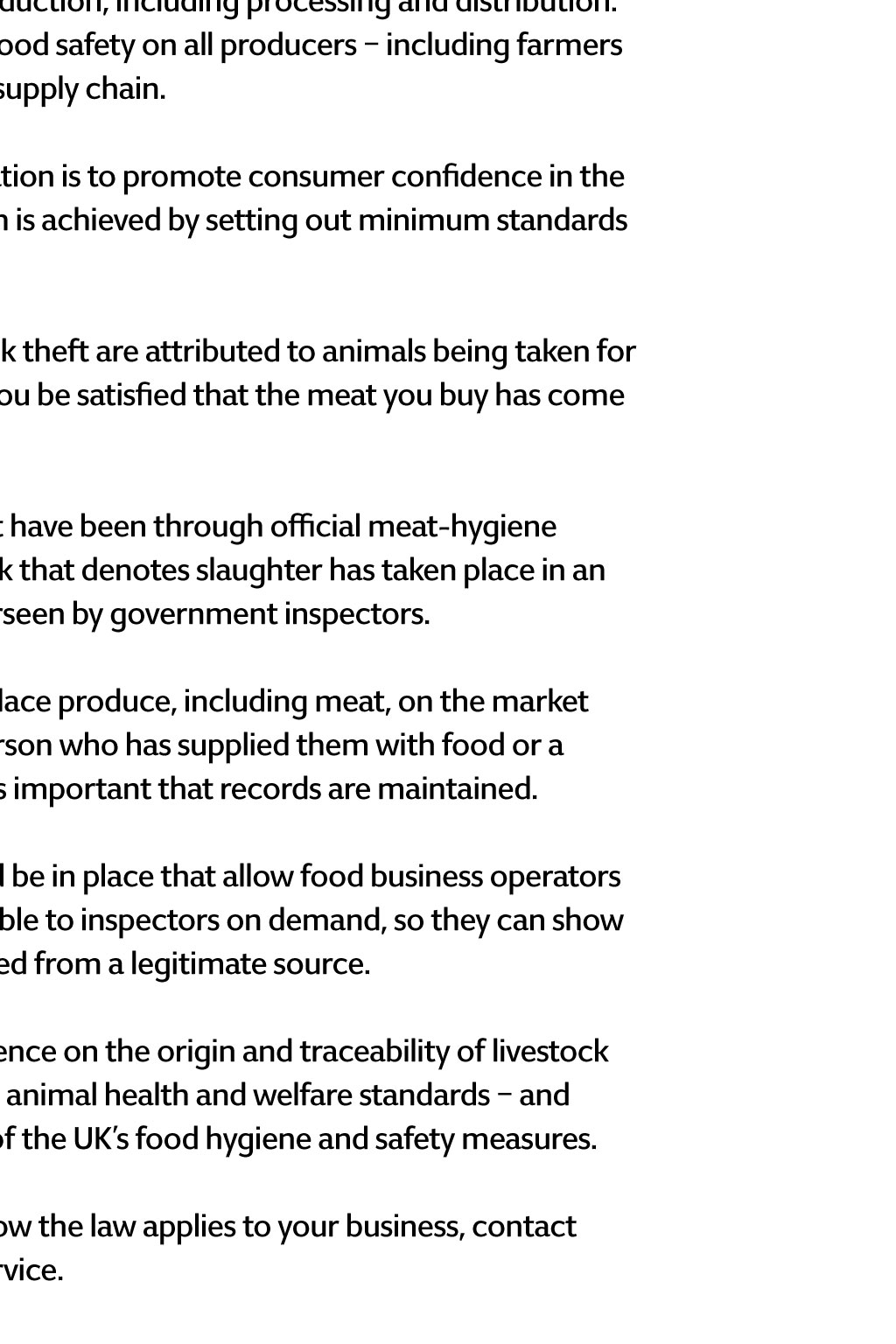
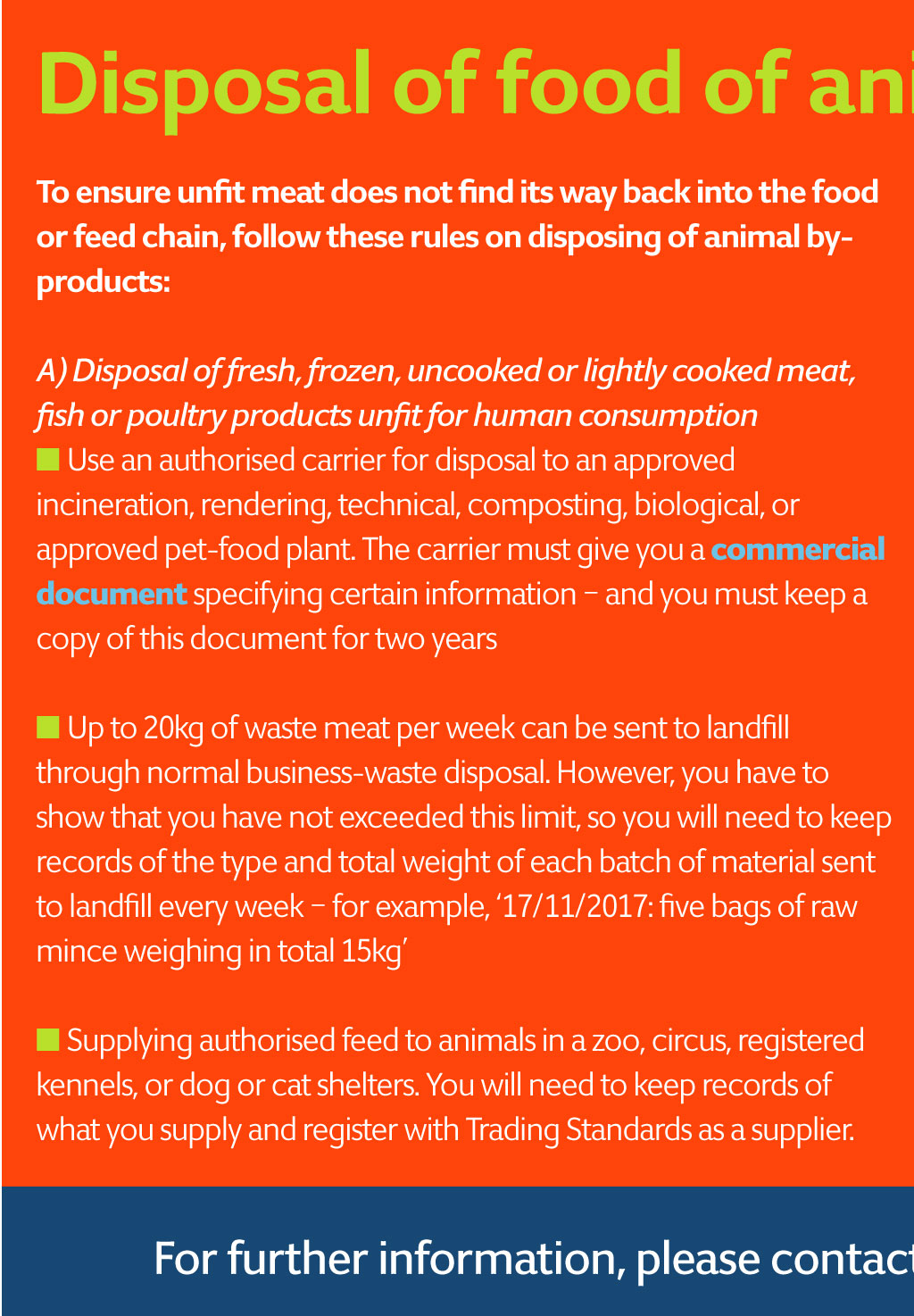
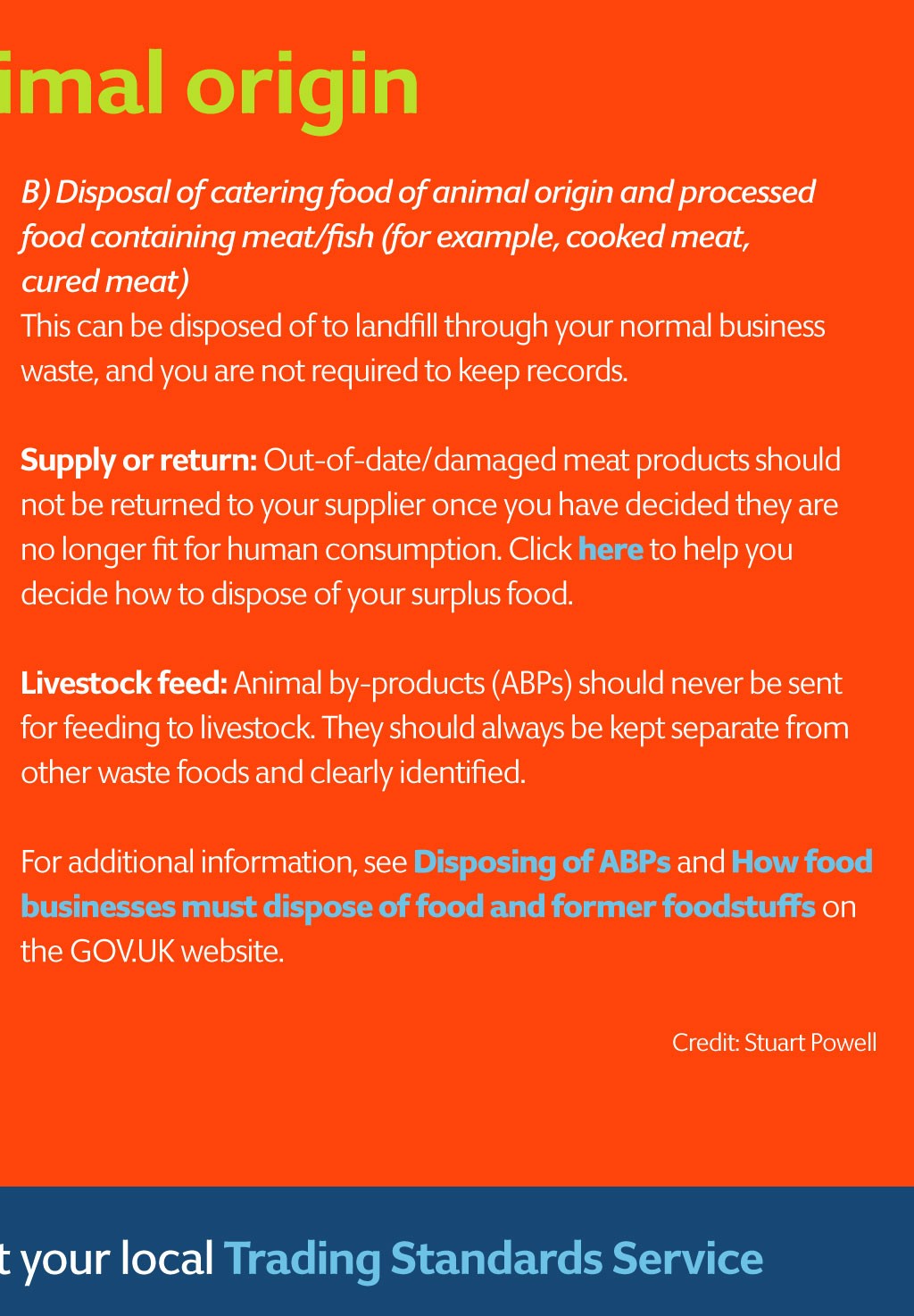









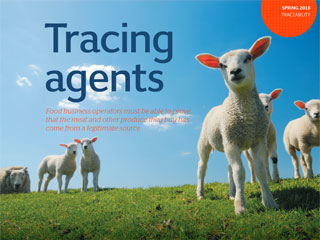
Tracing agents Spring 2018 Traceability Food business operators must be able to prove that the meat and other produce they buy has come from a legitimate source If animals have been stolen, there is no information on any medicines they may have received or about the health status of the farm from which they were taken Traceability is paramount for any business involved in the food supply chain especially now, when consumers increasingly want to know the provenance of the food they eat. With livestock thefts rising across the UK and several food-safety incidents being highlighted in the national press in recent years consumers are justified in wanting to know where the meat on their plate comes from. Spring lamb is a premium product, commanding a higher price because it is the first lamb of the season. To meet this demand, farmers will lamb their sheep earlier and rear the young animals on concentrate feed. The lambs are also often housed during the winter months to help their growth and ensure they are of a suitable weight for slaughter in the spring. This practice is more costly than rearing lamb the traditional way hence the increase in price. At this time of year then, there is greater financial incentive for livestock theft. If animals have been stolen, however, there is no information on any veterinary medicines they may have received including treatments for worms and no information about the health status of the farm from which they were taken. European law 178/2002 lays down the general principles for food and feed law, and incorporates food safety, making it a legal requirement to be able to trace food from farm to fork. The law requires the traceability of food, feed, food-producing animals, and any other substance intended to be, or expected to be, incorporated into a food or feed at all stages of production, including processing and distribution. This places a responsibility for food safety on all producers including farmers and retailers throughout the supply chain. The aim of the European legislation is to promote consumer confidence in the safety of the food we eat, which is achieved by setting out minimum standards of compliance for businesses. Most reported cases of livestock theft are attributed to animals being taken for illegal slaughter so how can you be satisfied that the meat you buy has come from a legitimate source? All meat sold to the public must have been through official meat-hygiene controls and have a health mark that denotes slaughter has taken place in an approved establishment overseen by government inspectors. Food business operators who place produce, including meat, on the market must be able to identify any person who has supplied them with food or a food-producing animal so it is important that records are maintained. Systems and procedures should be in place that allow food business operators to make this information available to inspectors on demand, so they can show that products have been supplied from a legitimate source. Failure to follow basic due diligence on the origin and traceability of livestock in the food chain compromises animal health and welfare standards and could lead to a serious breach of the UKs food hygiene and safety measures. Credit: Steph Young Images: istock/Enjoylife2 If you are in any doubt about how the law applies to your business, contact your local trading standards service. Disposal of food of animal origin To ensure unfit meat does not find its way back into the food or feed chain, follow these rules on disposing of animal byproducts: A) Disposal of fresh, frozen, uncooked or lightly cooked meat, fish or poultry products unfit for human consumption Use an authorised carrier for disposal to an approved incineration, rendering, technical, composting, biological, or approved pet-food plant. The carrier must give you a commercial document specifying certain information and you must keep a copy of this document for two years Up to 20kg of waste meat per week can be sent to landfill through normal business-waste disposal. However, you have to show that you have not exceeded this limit, so you will need to keep records of the type and total weight of each batch of material sent to landfill every week for example, 17/11/2017: five bags of raw mince weighing in total 15kg Supplying authorised feed to animals in a zoo, circus, registered kennels, or dog or cat shelters. You will need to keep records of what you supply and register with Trading Standards as a supplier. B) Disposal of catering food of animal origin and processed food containing meat/fish (for example, cooked meat, curedmeat) This can be disposed of to landfill through your normal business waste, and you are not required to keep records. Supply or return: Out-of-date/damaged meat products should not be returned to your supplier once you have decided they are no longer fit for human consumption. These flow charts will help you decide how to dispose of your surplus food. Livestock feed: Animal by-products (ABPs) should never be sent for feeding to livestock. They should always be kept separate from other waste foods and clearly identified. For additional information, see Disposing of ABPs and How food businesses must dispose of food and former foodstuffs on the GOV.UK website. Credit: Stuart Powell For further information, please contact your local Trading Standards Service